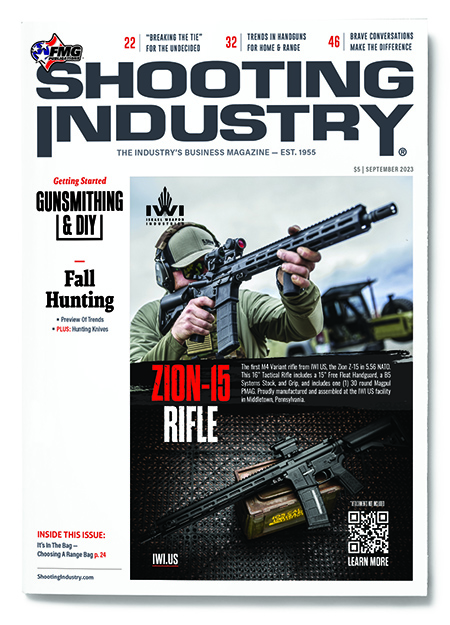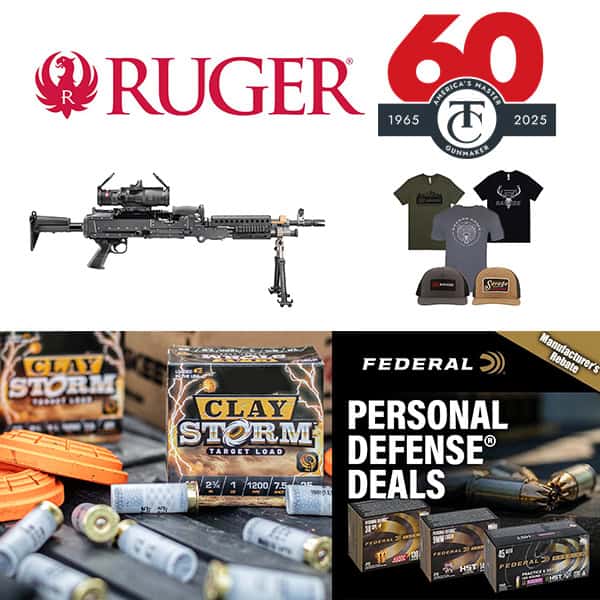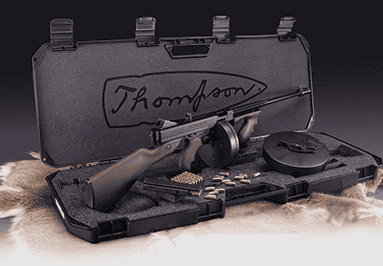“Break The Tie” For The Undecided Guest
If you’ve been a firearms retailer for a while, you’ve probably lost count of how many customers have thrown their hands up in frustration and blurted, “I don’t know which one I want!”
Do not despair. Rejoice. This is the moment the customer will find out why he or she came to you, and not to a big-box Monster Mart where the guy who was assembling bikes yesterday is working the gun counter today.
You and your staff are the ones who know how to quickly and efficiently question them as to their needs, guide them to the products that have the attributes most suitable for those needs and seal the deal with the best possible product selection.
There’s A History …
You’re not by any means the first gun dealer to face this problem. Let’s go back 50 or 60 years: A cop comes into the gun shop, proudly announces he has earned a spot on the department pistol team and needs a 6″ barrel .38 Special target revolver. The choice then was one of the classics in the firearms “brand wars” — Colt vs. Smith & Wesson.
Both were finely made revolvers, accurate enough to set records and win national championships. The first thing you would have asked that customer is, “Do you shoot bull’s-eye or PPC (Police Pistol Combat)?” The answer would inform your advice. The Colt’s long action gave more “mechanical advantage,” and in a bull’s-eye match generally shot single-action in the centerfire class with a .38 wheelgun, the Colt Officer’s Model was, therefore, the choice of champions because it was easier to thumb cock.
But in double-action shooting required in PPC, the Colt’s two-stage trigger was harder to manage than the single-stage pull of the Smith & Wesson, and you would have steered this customer into S&W’s K-38 Masterpiece.
During this same time period, the classic gun for off-duty or plainclothes cops and the most common concealed carry gun for lawfully armed citizens were one and the same: the “snub-nose .38 Special revolver.” The choices then were also Colt and S&W. The little five-shot J-Frame was a bit smaller and lighter, but Colt advertising countered their D-Frame snub had “the all-important sixth shot.” (Funny — I always thought if any shot was “all-important” it would be the first one, but I digress.) The Colt had better sights. The S&W had the smoother action.
And of course, there was always the customer with the full wallet who was amenable to cutting the Gordian Knot if you suggested, “Well, you could always buy one of each …”
Do not despair. Rejoice. This is the moment the customer will find out why he or she came to you, and not to a big-box Monster Mart where the guy who was assembling bikes yesterday is working the gun counter today.
Today’s Quandaries
Today, of course, the choices are somewhat different. The most popular self-defense handgun today is the polymer-framed 9mm micro-compact with as many rounds as it can hold — but it’s not the only choice your customer is looking at.
Around the country, we’ve seen a renaissance of the 10mm pistol, largely because it can be had with deep-penetrating bullets capable of killing an attacking bear and moose. For a long time, the Magnum revolver was the choice of the outdoorsman in Alaska and other places where large, dangerous game shared the woods with them. The choice essentially came down to the six-shot .44 Magnum revolver or the 16-shot polymer-framed 10mm Auto typified by the GLOCK 20.
The last time I was in Alaska and informally surveying gun dealers on what was selling, I was told the tie for “bestselling firearm” was between the 10mm GLOCK for outdoor carry and the 9mm GLOCK 19 as a personal-defense gun for “in town.”
The .44 Magnum revolver can be had with ammunition exceeding 1,000 foot-pounds of energy, and the 10mm can’t come close to it. In many bear attacks, the animal is upon the human and already in bodily contact, meaning the human may have to shoot the creature at muzzle contact. Press contact with a revolver allows six for six shots, and muzzle blast directed into the body magnifies the wound effect. Advantage: six-shooter. (Most Auto pistols will go out of battery and not fire at all in hard-press contact.)
On the other hand, if there is warning and time to shoot before bear reaches human, 16 chances to stop the charge are obviously better than only six, and the right 10mm ammo can still penetrate the skull for a brain shot or drive deep enough into a large quadruped to reach the heart. Recoil recovery time between shots will be better with the Auto, and the shorter trigger pull improves hit potential. Advantage: 10mm Auto.
Let’s say the customer is convinced: a 16-shot striker-fired 10mm Auto is their chosen Bear Medicine! Now we come to the next stage of selection: choosing the particular pistol.
Narrowing It Down
We come down to three choices presently on the market: the GLOCK, Springfield Armory XD(M) and the recently introduced Smith & Wesson M&P 10mm. All are 15+1 10mm Auto capacity, optics-ready (which more of your customers want every day) and have light rails.
The latter is important in the wilderness. If something large and furry comes into the customer’s tent at 3 a.m., the weapon-mounted light will tell the customer if it is a hungry bear and not his guide’s Siberian Husky who wants to get warm or the guide himself in a fur coat.
So, now we get down to the details.
All three of these pistols are in roughly similar price ranges. If you got a really good deal on one brand from the distributor or the manufacturer is offering a rebate right now, price could make the determination by itself. Failing that, we go to gun features your particular customer may or may not need.
Hand size vis-à-vis trigger reach? The large-frame GLOCK will have the longest trigger reach, the Springfield the shortest with the S&W in between. See which fits the customer’s hand better.
Does the customer have short fingers? Advantage: Springfield. Does the customer want to accessorize? Advantage: GLOCK — that brand of 10mm has been out since 1990 and has the most accessories available. Does your customer like the idea of a manual safety? S&W gets the nod: Only S&W offers this feature as an option on their polymer 10mm.
Issues such as these may seem like minutiae to the gun expert behind the counter, but for the customer on the other side of the showcase they may be dealmakers or — breakers.
Be A Deal maker
And the choice factors go that way across the board. Does the customer need a small, concealable carry gun with light recoil, and can be comfortable with .380 caliber? It would be hard to beat the .380 GLOCK 42 in this scenario.
Do they want the simplicity of loading/unloading/checking a revolver still provides better than anything else? A lightweight snub-nose .38 might be the best choice even now. And its nasty recoil with “hot loads” is ameliorated with a mild .38 Special 148-grain target wadcutter bullet, which combat shooting experts such as Chuck Haggard and others now consider adequate for winning gunfights.
Issues such as these may seem like minutiae to the gun expert behind the counter, but for the customer on the other side of the showcase they may be dealmakers or —breakers. The more you and your sales team can probe their needs and serve them, the more likely a seemingly indecisive customer will be to leave the store with something likely to save their or their loved ones’ lives.






